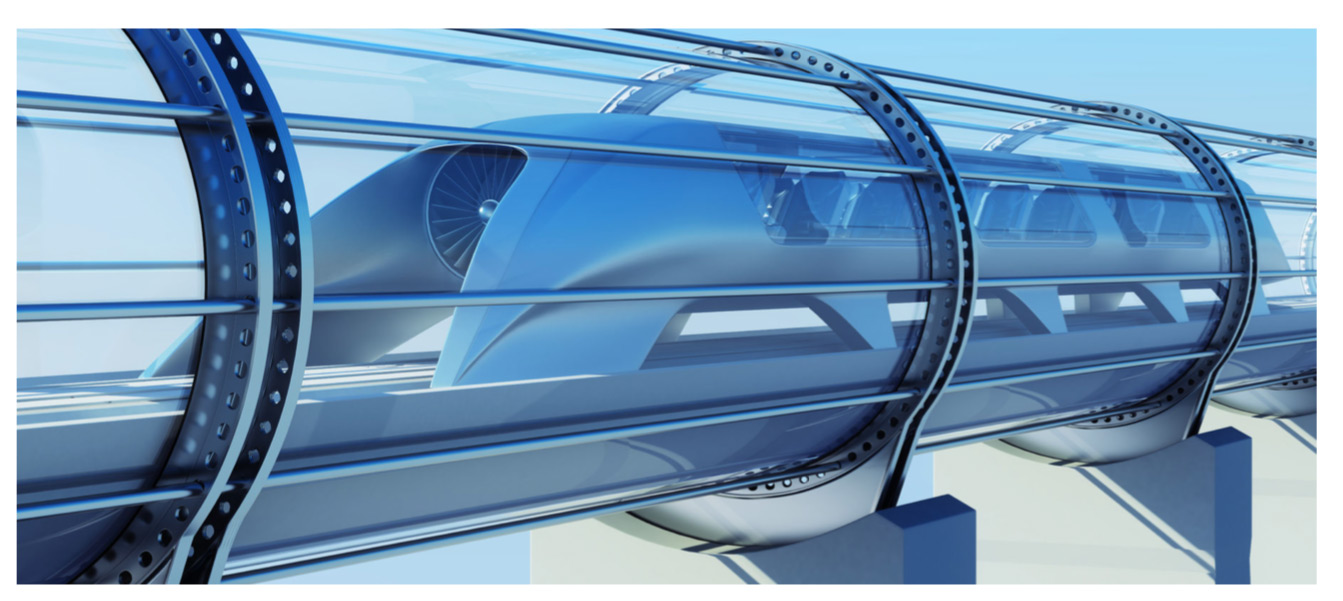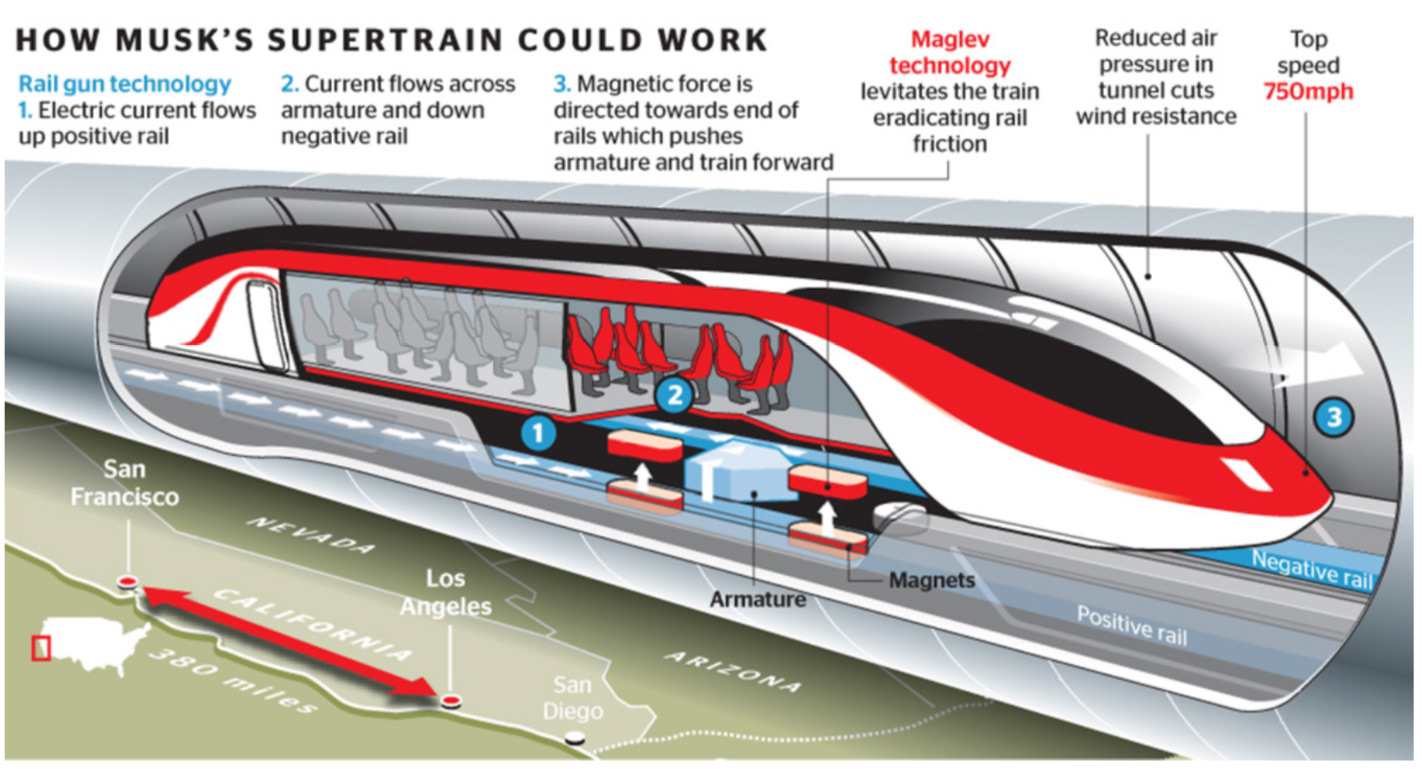Large-scale ground transportation. The most effective way to transport goods or people over ground is rail, and the latest versions are known as “maglev” – short for electromagnetic levitation.[37] While much of the developed world has already employed this technology, America is far behind. There are several reasons for this state of affairs: the petroleum lobby, the geographical size of the United States, the extent of personal vehicle ownership, and the expansiveness of the interstate highway system.[38] But it’s time for America to embrace the future, and when it comes to large-scale transportation, maglev rail is the future.

As maglev propulsion is nearly frictionless, maglev trains can travel at speeds exceeding 300 miles per hour (482 kilometers per hour). With Scarcity Zero, building prefabricated, modular train cars and track systems becomes more straightforward. This can enable us to build trains near renewable-integrated roads or the National Aqueduct – creating an insulated mass transit system with constant connectivity to power sources. And if these trains were built on prefabricated pylons next to highways, it would also remove the need to purchase additional land for their construction, further reducing costs.
Providing improved nationwide rail networks that can transport people or goods at 300 miles per hour is a four-fold improvement over most domestic rail technology. The implications this presents for trade, transport and tourism stand to return extensive economic benefits, all the more so if considering the new job opportunities opened by America gleaning expertise in this market sector.
Yet even though such speeds are impressive for a train, maglev technology can theoretically propel trains much faster. The biggest obstacle to doing so is air resistance, which, at high speed becomes especially significant for safe operation. A system called the Hyperloop may well enable us to change that.
Hyperloop. Originally envisioned by PayPal, Space X, and Tesla founder Elon Musk, the Hyperloop is a theoretical extension of the tubular transport systems used in banks, where a capsule rides a wave of air inside a tube from one location to another. With the Hyperloop, instead of transporting a capsule it would instead transport a train, integrating maglev technology for high-speed travel.[39]


As with submerged megatunnels, the Hyperloop would operate in a partially depressurized environment. Mounting a high-strength air compressor at the front of the train would remove forward-facing air resistance and, at the same time, provide a frictionless air cushion around the train body.[40] Reduced air pressure translates to reduced air resistance, permitting the Hyperloop to travel at far higher speeds than currently possible, with reduced effects of breaching the sound barrier due to a lack of air density.

The Hyperloop concept is envisioned to be prefabricated and built on pylons by design. Connecting Hyperloop technology with integrated renewables or the National Aqueduct would also provide constant power the system as a whole, which, if built with advanced synthetics, would be stronger and lighter than most commercially available materials today.
The Hyperloop has already started construction and has demonstrated initial successes in early tests and national competitions.[41] Several companies have since emerged to build functional models in Dubai, California and Europe.[42] A world with nigh-unlimited energy and resources alongside easy, sustainable access to high-performance materials only stands to accelerate the development of next-generation technologies and their arrival to market – presenting yet another transformational addition to capabilities of human movement.